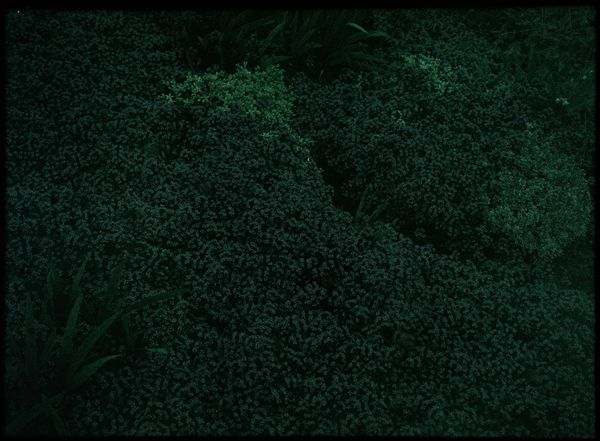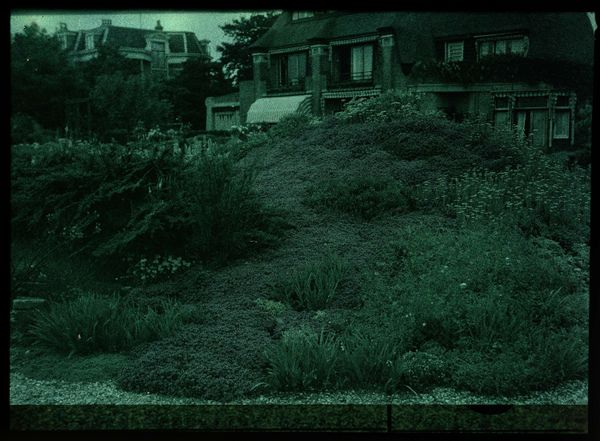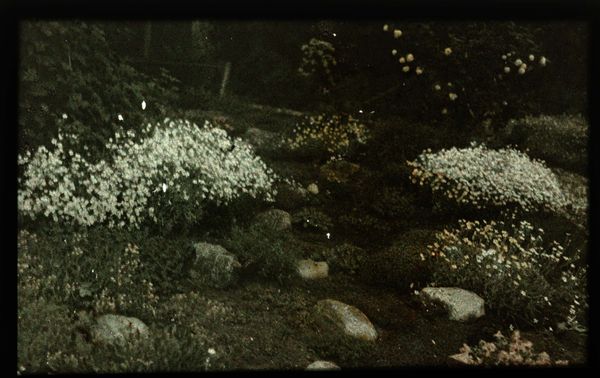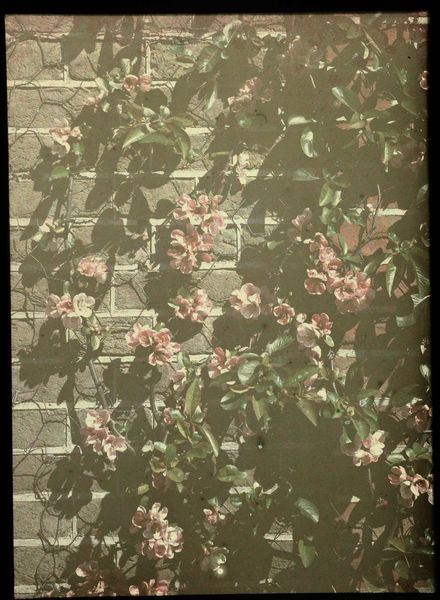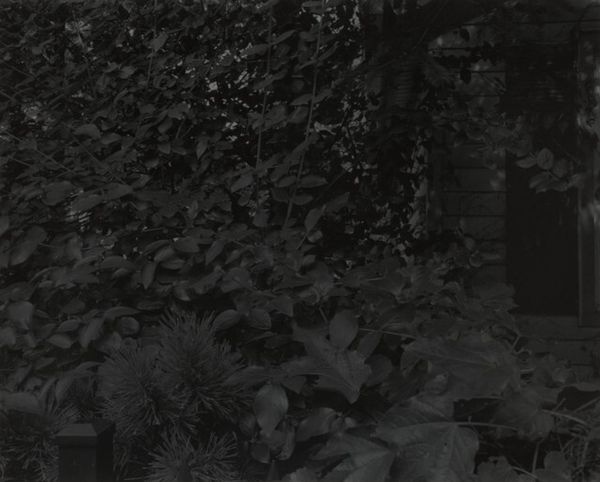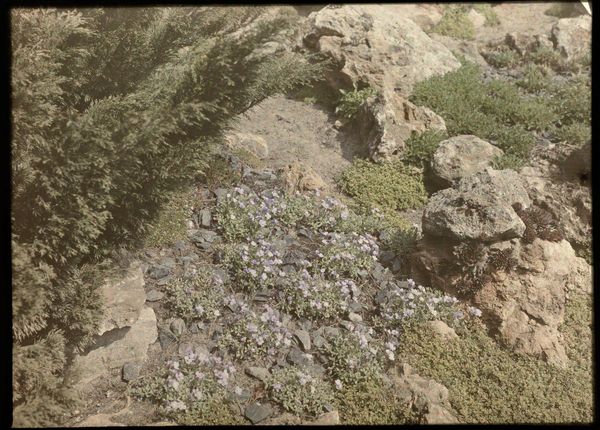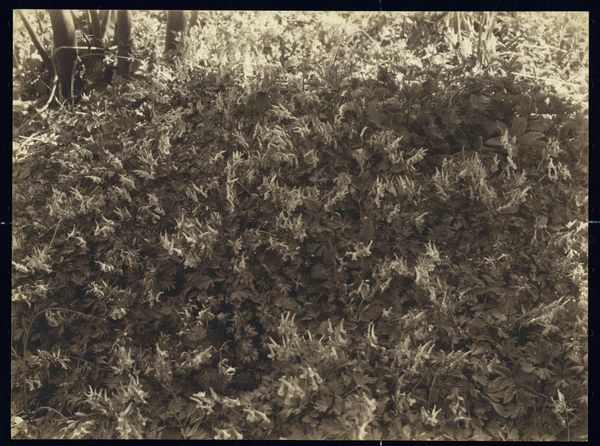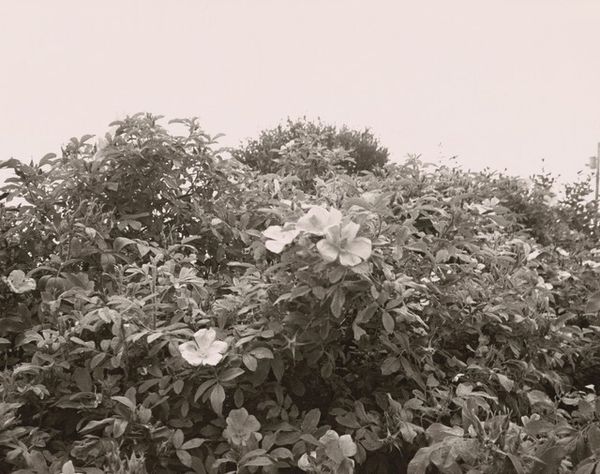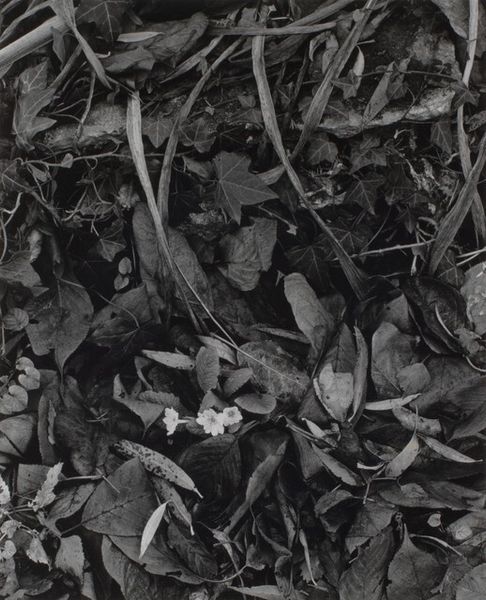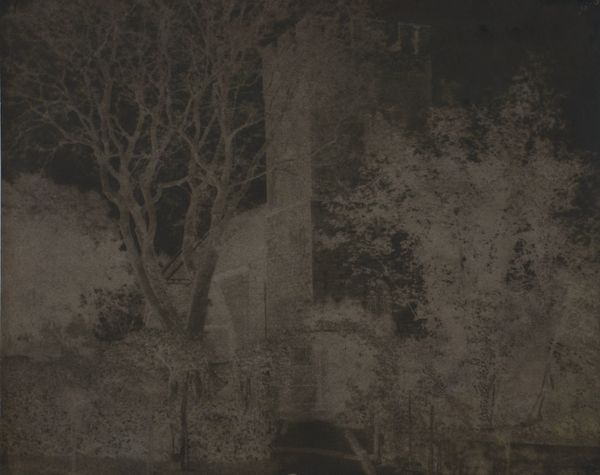
photography
#
organic
#
landscape
#
photography
#
botanical photography
#
organic texture
#
realism
Dimensions: height 89 mm, width 119 mm
Copyright: Rijks Museum: Open Domain
Editor: Here we have Adolphe Burdet's "Bed van viooltjes van bovenaf gezien," taken sometime between 1907 and 1930. It's a photograph of pansies, seemingly from directly above. What strikes me is how the composition almost flattens the image; it's not what you expect from a typical landscape. What do you make of it? Curator: It is indeed a compelling subversion of landscape conventions. We see a focus on the picture plane rather than an illusion of depth. Notice how the texture of the foliage and earth create an almost abstract pattern. Consider the balance between light and shadow—how the artist uses contrast to articulate the forms of the flowers. How does the interplay of organic and seemingly random patterns impact the overall design of the work? Editor: I see how the contrast helps to highlight each pansy, but the perspective almost reduces them to shapes rather than flowers. Are you saying this is an intentional abstraction? Curator: Perhaps. Although within the realm of realism, the choices made in composition, particularly the flattening perspective, invite a more structural, almost semiotic reading. The flowers become units within a carefully arranged system of visual elements. What impact might the medium of photography have on this intention, would you hypothesize? Editor: I hadn't considered that, the photography removes his hand somewhat. By removing obvious perspective, the photo emphasizes the details: shapes, tones, lines of the natural forms that might be overlooked, I guess. Thank you for the insight! Curator: It is in analyzing such pictorial elements that the artist's intention is found and communicated with visual forms.
Comments
No comments
Be the first to comment and join the conversation on the ultimate creative platform.

